|
|
Latest Researches in the field of IVF Treatment around the World
Swedish Research: Woman gives birth to world's first womb-transplant baby
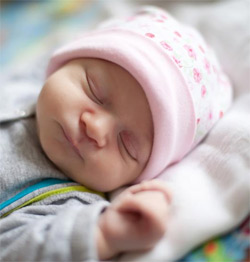 In
a ground-breaking research project at the University of Gothenburg, seven
Swedish women have had embryos reintroduced after receiving wombs from living
donors. Now the first transplanted woman has delivered a baby � a healthy and
normally developed boy. The world-unique birth was acknowledged in The Lancet on
5 October. The uterus transplantation research project at the University of
Gothenburg started in 1999 and has been evaluated in over 40 scientific
articles. The goal of the Gothenburg project is to enable women who were born
without a womb or who have lost their wombs in cancer surgery to give birth to
their own children. In
a ground-breaking research project at the University of Gothenburg, seven
Swedish women have had embryos reintroduced after receiving wombs from living
donors. Now the first transplanted woman has delivered a baby � a healthy and
normally developed boy. The world-unique birth was acknowledged in The Lancet on
5 October. The uterus transplantation research project at the University of
Gothenburg started in 1999 and has been evaluated in over 40 scientific
articles. The goal of the Gothenburg project is to enable women who were born
without a womb or who have lost their wombs in cancer surgery to give birth to
their own children.
Live donors
Nine women in the project have received a womb from live donors � in most cases
the recipient's mother but also other family members and close friends. The
transplanted uterus was removed in two cases, in one case due to a serious
infection and in the other due to blood clots in the transplanted blood vessels.
The seven remaining women have in 2014 tried to become pregnant through a
process where their own embryos, produced through IVF, are reintroduced to the
transplanted uterus.
First child from a transplanted uterus
The first early pregnancy was confirmed in the spring after a successful first
pregnancy attempt in a woman in her mid-30s, a little over a year after her
transplantation. In early September, the woman successfully delivered a baby by
caesarean section, making her the first woman in the world to deliver a child
from a transplanted uterus. Her uterus was donated by a 61-year-old unrelated
woman.
The caesarean section had to be performed earlier than planned: the woman
developed preeclampsia in week 32 of her pregnancy and the CTG indicated that
the baby was under stress. A caesarean section was performed in accordance with
normal clinical routines so as not to risk the health of the mother and child.
Developing normally
According to Professor Mats Br�nnstr�m, who performed the caesarean section, the
perfectly healthy newborn boy is developing normally. The baby weighed 1,775
grams (3 lbs 14.6 oz) at birth, which is normal size considering the gestational
age at delivery.
'The reason for the woman's preeclampsia is unknown, but it may be due to her
immunosuppressive treatment combined with the fact that she is missing one
kidney. The age of the donated womb may also be a factor. Also, preeclampsia is
generally more common among women who have become pregnant through IVF
treatment.'
Mild rejection episodes
The woman has had three mild rejection episodes since the transplant, one of
which occurred during the pregnancy. The rejection episodes, which are often
seen also in other types of transplants, could be stopped with immunosuppressive
treatment.
Followed closely
The research team followed the pregnancy closely, carefully monitoring the
growth and development of the foetus with a special focus on the blood supply to
the uterus and umbilical cord. 'There were concerns that the blood supply may be
compromised since we had reattached the blood vessels to the womb. But we did
not notice anything unusual concerning the function of the uterus and the foetus,
and the pregnancy followed all normal curves,' says Br�nnstr�m.
Major step
The successful delivery is considered a major step forward. 'It gives us
scientific evidence that the concept of uterus transplantation can be used to
treat uterine factor infertility, which up to now has remained the last
untreatable form of female infertility. It also shows that transplants with a
live donor are possible, including if the donor is past menopause,' says
Br�nnstr�m. Several research teams around the world have been awaiting the
results of the Gothenburg study in order to launch similar observational
studies. The pregnancy attempts are ongoing with the other six women in the
project.
Source: University of Gothenburg
Italian Research: Vitamin D deficiency affects fertility in women undergoing IVF
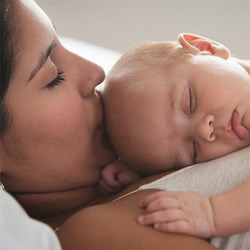 Women
with a vitamin D deficiency were nearly half as likely to conceive through in
vitro fertilization (IVF) as women who had sufficient levels of the vitamin,
according to a new study published in the Endocrine Society's Journal of
Clinical Endocrinology & Metabolism (JCEM). Women
with a vitamin D deficiency were nearly half as likely to conceive through in
vitro fertilization (IVF) as women who had sufficient levels of the vitamin,
according to a new study published in the Endocrine Society's Journal of
Clinical Endocrinology & Metabolism (JCEM).
Long known for its role in bone health, vitamin D is a steroid hormone that is
emerging as a factor in fertility. Animal studies have shown that the hormone,
which is produced in the skin as a result of sun exposure as well as absorbed
from some fortified foods, affects fertility in many mammals.
To examine vitamin D in human fertility, Italian researchers studied women
undergoing IVF, a type of assisted reproductive technology. More than 1 percent
of all infants born in the United States each year are conceived using assisted
reproductive technology, according to the U.S. Centers for Disease Control and
Prevention.
The prospective cross-sectional study analyzed vitamin D levels in women who
were referred to the Infertility Unit of the Fondazione Ca' Granda at Ospedale
Maggiore Policlinico for IVF during 2012. The researchers examined the success
of IVF procedures in 154 women who were vitamin D deficient and 181 women who
had sufficient levels of vitamin D in their blood. Women who had vitamin D
levels of at least 20 ng/ml in their blood were considered to have sufficient
levels of the hormone. Levels of 30 ng/ml are recommended for general health.
Women who had sufficient levels of vitamin D were nearly twice as likely to
conceive as their counterparts with vitamin D deficiency. Since women with
sufficient levels of the hormone were more likely to produce top-quality
embryos, researchers theorized vitamin D was involved in the production of
quality eggs in the ovaries as well as the successful implantation of embryos in
the uterus.
"Although randomized clinical trials are needed to confirm the findings, our
results certainly suggest that low levels of vitamin D contribute to
infertility," Paffoni said. "Since vitamin D supplementation is an inexpensive
and simple intervention with few relevant side effects, additional study in this
area has the potential to markedly influence the way infertility is treated."
Source: The Endocrine Society
Imperial College London Research: Researchers use safer method to stimulate
ovulation in women undergoing IVF treatment
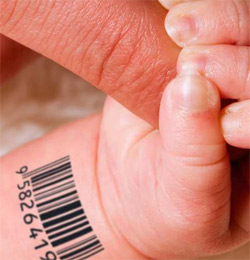 Researchers
have successfully used a new and potentially safer method to stimulate ovulation
in women undergoing IVF treatment. Twelve babies have been born after their
mothers were given an injection of the natural hormone kisspeptin to make their
eggs mature. Doctors normally administer another hormone, hCG, for this purpose,
but in some women, there is a risk that this can overstimulate the ovaries, with
potentially life-threatening consequences. Researchers
have successfully used a new and potentially safer method to stimulate ovulation
in women undergoing IVF treatment. Twelve babies have been born after their
mothers were given an injection of the natural hormone kisspeptin to make their
eggs mature. Doctors normally administer another hormone, hCG, for this purpose,
but in some women, there is a risk that this can overstimulate the ovaries, with
potentially life-threatening consequences.
Scientists at Imperial College London and clinicians at Imperial College
Healthcare NHS Trust tested the new method in 53 healthy volunteers at
Hammersmith Hospital in London.
The study, funded by the Medical Research Council, the National Institute for
Health Research and the Wellcome Trust, is published today in the Journal of
Clinical Investigation.
One in six couples in the UK experiences infertility, and 48,147 women underwent
IVF treatment in 2011.
Ovarian hyperstimulation syndrome (OHSS) affects around a third of IVF patients
in a mild form, causing symptoms such as nausea and vomiting. Less than 10 per
cent of patients experience moderate or severe OHSS, which can cause kidney
failure.
Professor Waljit Dhillo, from the Department of Medicine at Imperial College
London, who led the study, said: "OHSS is a major medical problem. It can be
fatal in severe cases and it occurs in women undergoing IVF treatment who are
otherwise very healthy. We really need more effective natural triggers for egg
maturation during IVF treatment, and the results of this trial are very
promising."
Kisspeptin is a naturally occurring hormone that stimulates the release of other
reproductive hormones inside the body. Unlike hCG, which remains in the blood
for a long time after an injection, kisspeptin is broken down more quickly,
meaning the risk of overstimulation is lower. The researchers will now carry out
a second study in women with polycystic ovary syndrome, who have the highest
risk of OHSS.
"Our study has shown that kisspeptin can be used as a physiological trigger for
egg maturation in IVF therapy," said Professor Dhillo. "It's been a joy to see
12 healthy babies born using this approach. We will now be doing more studies to
test whether kisspeptin reduces the risk of OHSS in women who are most prone to
developing it, with a view to
improving the safety of IVF therapy." Alison and Richard Harper had a baby boy,
Owen, in October 2013 after taking part in the trial in January.
"We took part because we wanted to pay it forward in return for the people who
made it possible for us to have a child through IVF," Alison said. "I went
through several cycles of IVF previously but the one in the trial was the least
uncomfortable - it was less painful and I felt less swollen. The staff we dealt
with were incredible."
Source: Imperial College London
Australian Research: University of Sydney announces major initiative in the
field of fertility research and treatment
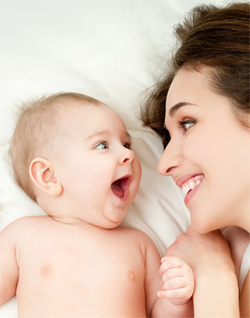 The
University of Sydney today announced a major initiative in the field of
fertility research and treatment, as it takes over ownership of Westmead IVF Pty
Limited, the company which operates the private fertility clinic at Westmead
Hospital, Westmead Fertility Centre. Westmead IVF has been given to the
University as part of a major gift from a foundation established by one of the
University's own alumni and staff members, Professor of Obstetrics and
Gynaecology, Brian Trudinger. The fertility service was established 30 years ago
and Professor Trudinger has been custodian for the past 22 years. It has the
express aim of making high quality fertility treatment accessible to all
patients at the lowest possible cost. The
University of Sydney today announced a major initiative in the field of
fertility research and treatment, as it takes over ownership of Westmead IVF Pty
Limited, the company which operates the private fertility clinic at Westmead
Hospital, Westmead Fertility Centre. Westmead IVF has been given to the
University as part of a major gift from a foundation established by one of the
University's own alumni and staff members, Professor of Obstetrics and
Gynaecology, Brian Trudinger. The fertility service was established 30 years ago
and Professor Trudinger has been custodian for the past 22 years. It has the
express aim of making high quality fertility treatment accessible to all
patients at the lowest possible cost.
As well as a 100 percent share in Westmead IVF Pty Ltd, the gift includes a
$10.4 million cash donation which will establish both a chair in reproductive
endocrinology and infertility and endow a research program in maternal foetal
medicine. The company will continue to support ongoing world-class research in
the field at the University. This would collocate the two phases of
reproduction, falling pregnant and carrying a pregnancy to a successful outcome.
The University's Vice-Chancellor, Dr Michael Spence, said this gift represented
a unique opportunity to build on Sydney Medical School's existing strength in
reproductive, maternal and child health while at the same time providing the
best possible clinical services to patients. "By combining research into the
beginnings of life, fertility, conception, the foetus, pregnancy and birth with
a clinical facility for reproductive technology services, this gift will enable
us to deepen and broaden that research and to return Australia to a position of
world leadership in the field of assisted reproductive technologies. This gift
is an outstanding example of a donation to the INSPIRED fundraising Campaign and
donors' capacity to transform the landscape in a particular area of research.
"What makes this gift particularly appropriate is that the University and
Westmead IVF share a commitment to serving the community and to quality and
equity of access. It also gives us an opportunity to work even more closely with
the Western Sydney Local Health District to advance the health of the community
by aligning research and clinical treatment, a model which has been clearly
shown to lead to innovation and better health care for patients."
Professor Trudinger sees the University as the natural guardian of a fertility
service with core values of quality, accessibility and scientific enquiry. "The
strength of the University in research and academic activity would be a great
benefit to the hospital. I am delighted the University has so enthusiastically
embraced this venture," he said.
The gift has been welcomed by both the Western Sydney Local Health District (WSLHD)
and Westmead Hospital. Emeritus Professor Stephen Leeder, Board Chair of WSLHD,
said improved health outcomes resulted from partnerships in a continuum of
translational research from the laboratory to the bedside. "This endowment and
gift will enable the University of Sydney and the Western Sydney Local Health
District at Westmead Hospital to strengthen their contribution to providing the
best possible care at the beginning of life. Professor Trudinger and his
colleagues have done superbly in this field and I am confident they will
continue to do so through future research and and clinical service," he said.
This is the University's second major new initiative in health research in as
many months, following the launch in June of the new Charles Perkins Centre,
which aims to ease the burden of obesity, diabetes, cardiovascular disease and
related conditions by generating collaborative interdisciplinary research and
education that translates into real-world
solutions.
Source: University of Sydney
US Research: Conventional fertility hormones do not increase risk of breast,
gynecological cancers
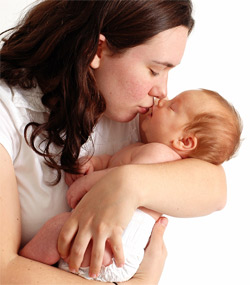 Generally
reassuring' results from a large 30-year follow-up study of women treated for
infertility. There is "little evidence" that the use of conventional fertility
hormones used for ovarian stimulation in the treatment of infertility increases
the long-term risk of breast and gynecological cancers, according to the results
of a substantial 30-year follow-up study. However, the extended use of
clomiphene citrate was associated with a higher risk of breast cancer among
women who had used the fertility drug for 12 cycles or more. Gonadotrophins,
more commonly used for ovarian stimulation today, were not generally associated
with any increased risk, except in a sub-group of women who remained childless
after treatment. Generally
reassuring' results from a large 30-year follow-up study of women treated for
infertility. There is "little evidence" that the use of conventional fertility
hormones used for ovarian stimulation in the treatment of infertility increases
the long-term risk of breast and gynecological cancers, according to the results
of a substantial 30-year follow-up study. However, the extended use of
clomiphene citrate was associated with a higher risk of breast cancer among
women who had used the fertility drug for 12 cycles or more. Gonadotrophins,
more commonly used for ovarian stimulation today, were not generally associated
with any increased risk, except in a sub-group of women who remained childless
after treatment.
Results of the study, which was in part funded by the National Institutes of
Health of the USA, are presented today at the Annual Meeting of ESHRE by Dr
Humberto Scoccia from the University of Illinois at Chicago, USA. Dr Louise
Brinton of the US National Cancer Institute was principal investigator. The
study was a retrospective investigation involving 12,193 women treated for
infertility between 1965 and 1988 at five US sites. Follow-up lasted until 2010,
with evaluation based on questionnaire and linkage to US death and cancer
registries. A total of 9,892 women were successfully followed for cancer
outcomes.
As background to the study Dr Scoccia explained that fertility drugs are known
to increase levels of the principal female hormones estradiol and progesterone,
both of which have been implicated in the pathogenesis of breast, ovarian and
uterine cancers. Drugs to stimulate the ovaries for ovulation induction and IVF
have included clomiphene and fertility hormones derived from human subjects -
human menopausal gonadotrophins, hMG, and follicle stimulating hormone, FSH.
Both hMG and FSH were not introduced into widespread use until the very early
1980s - and until then clomiphene was the most commonly used agent.
"Despite the biologic plausibility, results of studies of fertility drugs and
breast and gynecological cancers present a mixed picture, with some showing
increases in risk, others decreases, and still others showing no substantial
associations," said Dr Scoccia. "However, most of these studies had small
numbers with relatively short follow-up periods, and were unable to control for
other cancer predictors - including the indications for drug usage, such as
anovulation or endometriosis, which could independently affect cancer risk. Many
questions remain unresolved."
Over the 30 years of follow-up 749 breast, 119 endometrial (uterine) and 85
ovarian cancers were identified in the 9,892 subjects. The "ever use" of
clomiphene - which included approximately 40% of the cohort - was not associated
with any increased breast cancer risk, except when subjects had used the drug in
12 or more treatment cycles. In such cases clomiphene use was associated with a
significant hazard ratio of invasive breast cancer of 1.69 (95% CI 1.16-2.45).
This risk remained relatively unchanged after adjustment for causes of
infertility and multiple breast cancer predictors. Clomiphene use was not
significantly associated with either endometrial (HR 1.41, 95% CI 0.98-2.04) or
ovarian (HR 1.34, 95% CI 0.86-2.07) cancers, even when multiple exposure cycles
were involved.
Only 10% of the cohort had been treated with gonadotrophins (hMG and FSH) -
usually in combination with clomiphene - and there was no association with
cancer risk identified, except in those who remained childless (HR 1.98; 95% CI,
1.04.60). "Given that the majority of our women who received gonadotrophins also
received clomiphene," said Dr Scoccia, "it is likely that the increased risk
among nulligravid women reflects an effect on risk of their infertility rather
than that of drug usage."
In making further comment, he said that the study's findings do not support "a
strong relationship" between the use of fertility drugs (mainly clomiphene
citrate) and breast, uterine and ovarian cancers. He described the results as
"generally reassuring", noting that this study had considerably more statistical
power than previous efforts. However, despite the long follow-up of this study
he urged continuous monitoring because of the "relatively young age of our study
population and the later peak incidence of most of these cancers". It is also
likely that the proportion of patients using gonadotrophins for ovarian
stimulation - particularly in IVF - increased substantially after the mid-1980s.
Source:European Society of Human Reproduction and Embryology
Women Fitness hope this compilation of latest researches in IVF treatment may be
a source of reference to our visitors.
Back
Dated 28 April 2015
|
|
|
|
|









